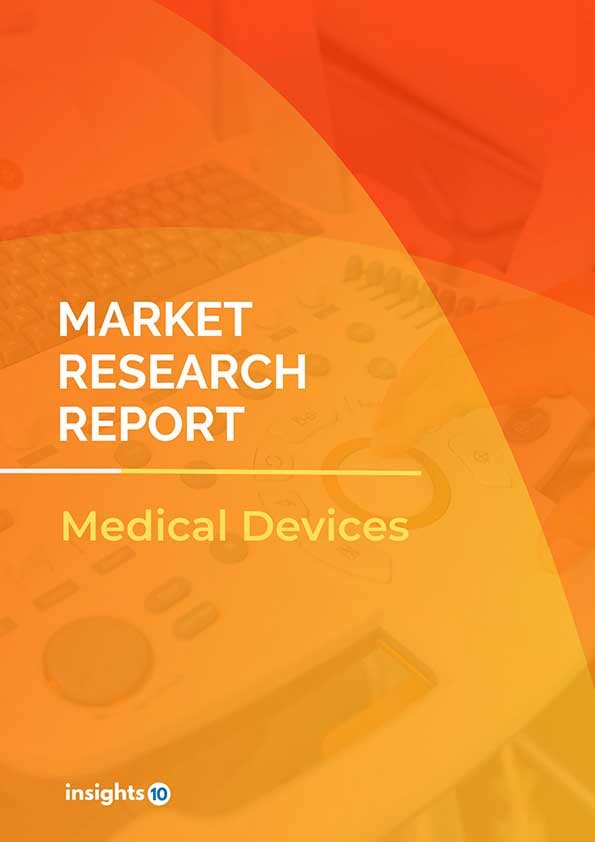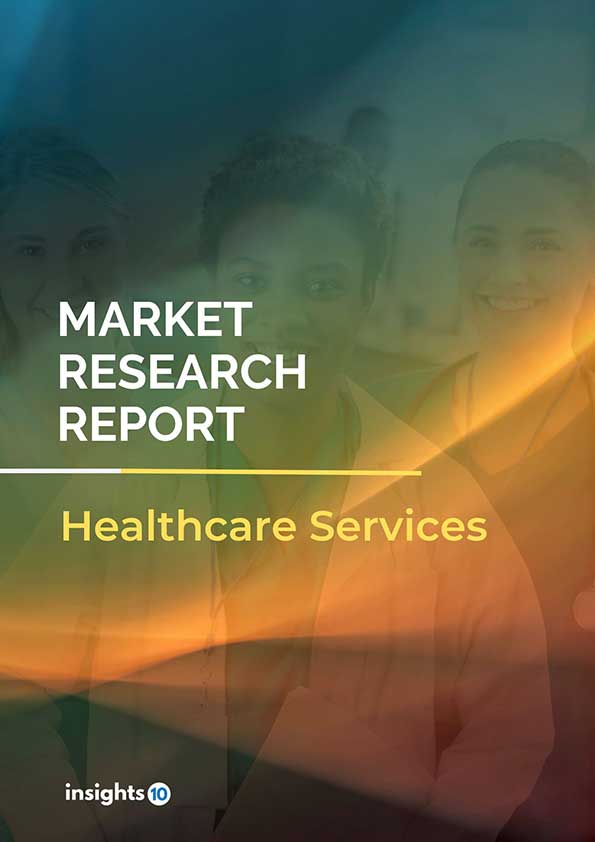Mexico Cardiac Surgery Instruments Market Analysis
The Mexico Cardiac Surgery Instruments Market is expected to witness growth from $31 Mn in 2022 to $53 Mn in 2030 with a CAGR of 6.85% for the forecasted year 2022-2030. Heart failure and coronary artery disease are two rising health concerns in Mexico. The overall incidence of these illnesses is anticipated to rise as the population grows and lifestyles change, fueling demand for cardiac surgery instruments. The market is segmented by type, application and by end user. Some key players in this market include BIOMEDICA MEXICANA, Medstent, LivaNova, B. Braun, Medline Industries, KLS Martin, and STILLE.
Buy Now

Mexico Cardiac Surgery Instruments Healthcare Market Executive Analysis
The Mexico Cardiac Surgery Instruments Market size is at around $31 Mn in 2022 and is projected to reach $53 Mn in 2030, exhibiting a CAGR of 6.85% during the forecast period. Health spending in Mexico increased significantly from 5.4% in 2019 to 6.2% in 2020, compared to an average rise of 0.9% across the Organization for Economic Cooperation and Development region. The hospital sector received 6.2% of Mexico's GDP (gross domestic product) in 2020. Even though the percentage has decreased from 55% to 45%, the average Mexican still has to cover these costs out of pocket.
In Mexico, a wide range of hospitals and medical facilities offer cardiac surgery services. Cardiac surgery is a speciality field of medicine. These facilities are equipped with the most advanced surgical equipment and technologies to provide the best patient care available. Mexico controls and treats a range of cardiac problems using surgical instruments. These instruments are utilized in a variety of procedures, including minimally invasive heart surgery, valve repair or replacement, and coronary artery bypass grafting. Instruments for cardiac surgery are being developed to aid surgeons, improve patient outcomes, and enable them to perform complicated cardiac operations with greater accuracy and precision. For less traumatic operations and smaller incisions, cardiac surgery utilizes a variety of minimally invasive tools. Patients may experience less pain as a consequence, and they may recover more quickly. The use of cardiac surgery instruments allows hospitals to perform more treatments and cut down on patient wait times by reducing the time needed to complete cardiac operations. By lowering the likelihood of complications, speeding up the healing process, and enhancing treatment overall, cardiac surgery instruments can improve patient outcomes.

Market Dynamics
Market Growth Drivers
Heart failure and coronary artery disease are two rising health concerns in Mexico. The overall incidence of these illnesses is anticipated to rise as the population grows and lifestyles change, fueling demand for cardiac surgery instruments. For cardiovascular diseases, patients are increasingly looking for minimally invasive surgeries because they require less downtime and carry a reduced chance of complications. The demand for specialized cardiac surgery tools, such as endoscopic tools and robotic-assisted surgical systems, is anticipated to increase as a result of this development. The Mexican government has created programs to promote the creation and uptake of new medical technologies and has been supportive of healthcare innovation. This covers financing for research and development as well as assistance with the marketing of novel medical devices, like tools for cardiac surgery. Mexico is a well-known location for medical tourism and has a solid reputation for providing high-quality healthcare. As more patients seek care in the nation, this is anticipated to increase demand for instruments used in cardiac surgery.
Market Restraints
There is still a critical lack of medical facilities and trained medical personnel in some parts of Mexico, despite attempts to upgrade the country's healthcare infrastructure. This may restrict the development and spread of medical equipment and devices, including tools used in cardiac surgery. Slow economic development, inflation, and currency swings have been recent economic challenges for Mexico. These variables may affect the cost of medical supplies and equipment, which may reduce the demand for instruments used in cardiac surgery.
Competitive Landscape
Key Players
- BIOMEDICA MEXICANA (MX)
- Medstent (MX)
- LivaNova
- B. Braun
- KLS Martin
- Medline Industries
- STILLE
Healthcare Policies and Regulatory Landscape
The Federal Commission for Protection against Health Risks (COFEPRIS), which is in charge of ensuring the security, effectiveness, and efficacy of cardiac surgery equipment distributed in Mexico, regulates medical devices. Obtaining a license to practice medicine in the United States requires passing the Medical Licensing Examination (MLE), which is administered by the American Board of Medical Specialties (ABMS). The National Center for Health Technology Excellence (CENETEC), the Mexican Council for Accreditation of Medical Education (COMAEM), and the National Institute of Public Health (INSP) are a few other supervisory organizations in Mexico that are engaged in healthcare regulation in addition to COFEPRIS. Various factors, including the rising demand for healthcare services, technological developments, and the necessity to enhance patient outcomes, have an impact on the regulatory environment in Mexico's market for cardiac surgery instruments. In recent years, the Mexican government has instigated policies besieged at refining access to healthcare services and reducing the cost of medical devices, which may have an effect on the supervisory landscape in the cardiac surgery instruments market.
1. Executive Summary
1.1 Device Overview
1.2 Global Scenario
1.3 Country Overview
1.4 Healthcare Scenario in Country
1.5 Regulatory Landscape for Medical Device
1.6 Health Insurance Coverage in Country
1.7 Type of Medical Device
1.8 Recent Developments in the Country
2. Market Size and Forecasting
2.1 Market Size (With Excel and Methodology)
2.2 Market Segmentation (Check all Segments in Segmentation Section)
3. Market Dynamics
3.1 Market Drivers
3.2 Market Restraints
4. Competitive Landscape
4.1 Major Market Share
4.2 Key Company Profile (Check all Companies in the Summary Section)
4.2.1 Company
4.2.1.1 Overview
4.2.1.2 Product Applications and Services
4.2.1.3 Recent Developments
4.2.1.4 Partnerships Ecosystem
4.2.1.5 Financials (Based on Availability)
5. Reimbursement Scenario
5.1 Reimbursement Regulation
5.2 Reimbursement Process for Diagnosis
5.3 Reimbursement Process for Treatment
6. Methodology and Scope
Cardiac Surgery Instruments Market Segmentation
By Type (Revenue, USD Billion):
The market is divided into segments in this study based on the goods, applications, end users, and geographical areas. The market is divided into forceps, scissors, needle holders, clamps, and other cardiac surgery instruments based on the product. In 2017 the forceps category led the market, and it is anticipated that it will increase at the fastest rate going forward. The rise in heart surgeries and the frequent usage of forceps in most cardiac procedures are credited with the segment's strong growth.
- Forceps
- Vascular Forceps
- Grasping Forceps
- Other Forceps
- Needle Holders
- Scissors
- Clamps
- Other Cardiac Surgical Instruments
By Application (Revenue, USD Billion):
The market is further segmented by application into paediatric cardiac surgery, heart valve surgery, coronary artery bypass graft (CABG), and other applications. The Mexico market's largest and fastest-growing application segment is CABG. This is mostly explained by the increased prevalence of heart illnesses and the consequent rise in surgical treatments. The second-largest category is heart valve surgery.
- Coronary Artery Bypass Graft (CABG)
- Heart Valve Surgery
- Pediatric Cardiac Surgery
- Other Applications
By End User (Revenue, USD Billion):
Based on the end user, the market is segmented into hospitals and cardiac centers, and ambulatory surgery centers. The hospitals and cardiac centers segment is expected to dominate the market for cardiac surgery instruments. Growth in this end-user segment can be attributed to the increasing incidence of cardiac and heart valve diseases and the subsequent increase in the number of cardiac surgery procedures.
- Hospitals and Cardiac Centers
- Ambulatory Surgery Centers
Methodology for Database Creation
Our database offers a comprehensive list of healthcare centers, meticulously curated to provide detailed information on a wide range of specialties and services. It includes top-tier hospitals, clinics, and diagnostic facilities across 30 countries and 24 specialties, ensuring users can find the healthcare services they need.
Additionally, we provide a comprehensive list of Key Opinion Leaders (KOLs) based on your requirements. Our curated list captures various crucial aspects of the KOLs, offering more than just general information. Whether you're looking to boost brand awareness, drive engagement, or launch a new product, our extensive list of KOLs ensures you have the right experts by your side. Covering 30 countries and 36 specialties, our database guarantees access to the best KOLs in the healthcare industry, supporting strategic decisions and enhancing your initiatives.
How Do We Get It?
Our database is created and maintained through a combination of secondary and primary research methodologies.
1. Secondary Research
With many years of experience in the healthcare field, we have our own rich proprietary data from various past projects. This historical data serves as the foundation for our database. Our continuous process of gathering data involves:
- Analyzing historical proprietary data collected from multiple projects.
- Regularly updating our existing data sets with new findings and trends.
- Ensuring data consistency and accuracy through rigorous validation processes.
With extensive experience in the field, we have developed a proprietary GenAI-based technology that is uniquely tailored to our organization. This advanced technology enables us to scan a wide array of relevant information sources across the internet. Our data-gathering process includes:
- Searching through academic conferences, published research, citations, and social media platforms
- Collecting and compiling diverse data to build a comprehensive and detailed database
- Continuously updating our database with new information to ensure its relevance and accuracy
2. Primary Research
To complement and validate our secondary data, we engage in primary research through local tie-ups and partnerships. This process involves:
- Collaborating with local healthcare providers, hospitals, and clinics to gather real-time data.
- Conducting surveys, interviews, and field studies to collect fresh data directly from the source.
- Continuously refreshing our database to ensure that the information remains current and reliable.
- Validating secondary data through cross-referencing with primary data to ensure accuracy and relevance.
Combining Secondary and Primary Research
By integrating both secondary and primary research methodologies, we ensure that our database is comprehensive, accurate, and up-to-date. The combined process involves:
- Merging historical data from secondary research with real-time data from primary research.
- Conducting thorough data validation and cleansing to remove inconsistencies and errors.
- Organizing data into a structured format that is easily accessible and usable for various applications.
- Continuously monitoring and updating the database to reflect the latest developments and trends in the healthcare field.
Through this meticulous process, we create a final database tailored to each region and domain within the healthcare industry. This approach ensures that our clients receive reliable and relevant data, empowering them to make informed decisions and drive innovation in their respective fields.
To request a free sample copy of this report, please complete the form below.
We value your inquiry and offer free customization with every report to fulfil your exact research needs.










































